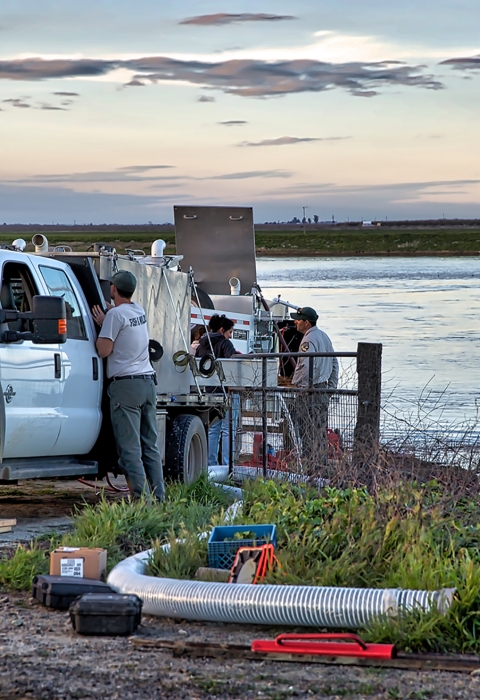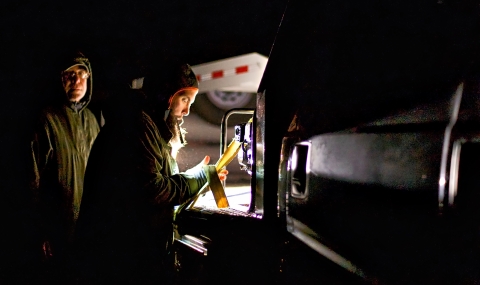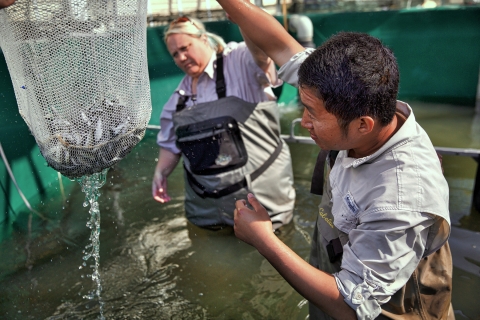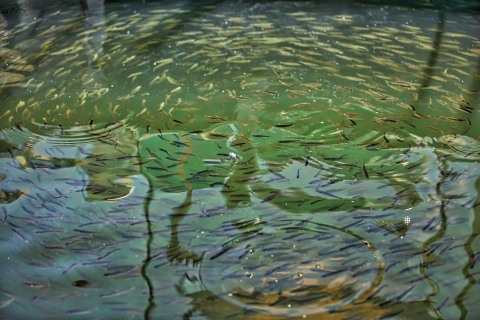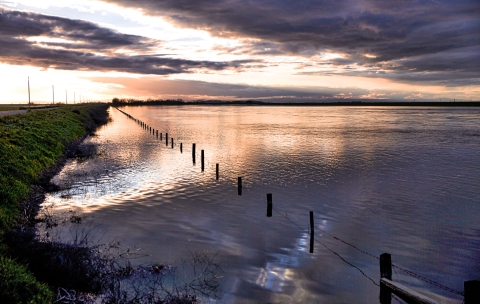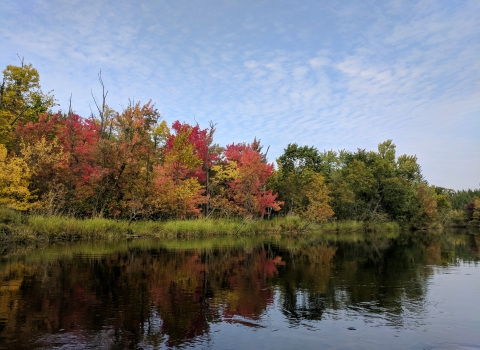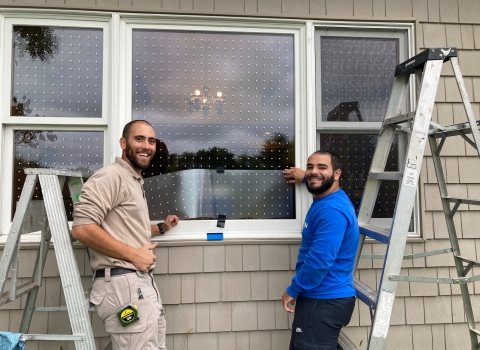When almost 90,000 3-inch spring-run Chinook salmon shot into the darkness of the Eastside Bypass of the San Joaquin River the night of March 6, they didn’t get there alone. It took a strong, collaborative effort by numerous state, federal, university and private entities, working for months under the umbrella of the San Joaquin River Restoration Program (SJRRP) to ensure that the imperiled salmon species continued to thrive for future generations.
That collaboration was impressive.
While California's Department of Fish and Wildlife (CDFW) is the state natural resource partner in the program and conducted the rearing, tagging, transport and release of the fish, numerous entities laid groundwork for the release. The U.S. Fish and Wildlife Service is the lead agency responsible for the reintroduction of spring-run to the San Joaquin River. The National Oceanic and Atmospheric Administration (NOAA) is the permitting lead and established a rule under the Endangered Species Act that allowed for the reintroduction of spring-run, outside the species’ current range.
And, the U.S. Bureau of Reclamation coordinated with private landowners and the Lower San Joaquin Levee District to obtain an accessible fish release location to provide the salmon the best opportunity to migrate downstream.
By the time the late-night releases took place off Washington Road near the city of Merced, approximately 15 participants were on-hand overseeing and monitoring water quality and fish conditions, helping send the juvenile spring-run Chinooks on their trip down the San Joaquin River and out under the Golden Gate Bridge to the Pacific Ocean.
"This project is simply too big and too important for any one group or organization to complete on their own,” said Maria Rea, office chief for NOAA Fisheries' Central Valley Office. "We are now able to reintroduce threatened spring-run Chinook salmon back into the upper San Joaquin River only because of the unprecedented commitment and cooperation among state and federal agencies, landowners and non-governmental organizations."
Traditionally, spring-run Chinook salmon were the most abundant run of Chinook salmon in California’s Central Valley.
But the construction of dams and water diversions, along with continuous degradation of spawning and rearing habitat, ongoing fishing pressure, and an increase in predator populations among other threats, led to the near extinction of spring-run in all rivers in the Central Valley. In 1999, spring-run were listed as threatened under the Endangered Species Act.
The majority of the fish for this year’s release (51,044 fish) came from CDFW’s interim Salmon Conservation and Research Facility and marked only the second year of releasing juveniles produced solely on the San Joaquin River. The remainder of the released salmon (38,106 fish) were raised at the Satellite Incubation and Rearing Facility from eggs translocated from the Feather River Fish Hatchery in Oroville.
On the day of the release, CDFW workers at the interim facility near Friant Dam spent several hours scooping fish from holding tanks into two fish transport trucks before taking them over to the river’s Eastside Bypass release location.
The fish were released in total darkness just before 9 p.m. Though the actual release took just a few minutes, the fish were held in the transport tanks beforehand for about four hours in river water to acclimate. The releases occurred well after sunset to thwart predators.
As a result, the yearly release in the San Joaquin River has taken on added significance and the March 6 effort provided the best conditions yet, said Don Portz, lead fisheries biologist for the San Joaquin River Restoration Program.
"We feel this will be our greatest opportunity for adult spring-run returns in the last four years of juvenile releases,” Portz said. “With more than 89,000 salmon released under flood flows, we now have a fully connected river, optimum temperatures, and turbid conditions to help conceal the fish from predators on their outmigration to the ocean."
While this was the fourth year in a row spring-run Chinook salmon were released as part of the program, this is the first time the fish will be monitored with tracking technology as they move downriver. The process to insert the transmitters – known as juvenile salmon acoustic telemetry system, or JSATS – resembles a miniature operating room.
The study was made possible through a grant from the Delta Science Program and the 15 millimeter-long transmitters are surgically implanted through an incision into the abdominal cavity of the anesthetized juvenile fish. The incision is then closed by a single suture. Powered by small hearing aid-type batteries, the tags are expected to emit a signal for up to 60 days.
Following release, the fish will be tracked using a series of receivers placed in the river at intervals from the release site and out to the ocean.
“Fish can be detected by the receivers from up to 300 yards away,” said Eric Chapman, one of the lead researchers with the UC Davis program. Data from the tracking will be recorded, he said, and will provide scientists with a greater understanding of migratory routes, travel duration, survival rates, and other information to better understand fish migration within the San Joaquin River system. If all goes well, the juveniles will feed and grow for the next two to five years before beginning their journey back up the river to spawn and produce the next generation of offspring.
The re-establishment of a self-sustaining spring-run Chinook salmon population to the San Joaquin River is dependent upon a progressive introduction process that involves both natural and hatchery supplemented production, said Lori Smith, fish biologist in the Service's’ Lodi Fish and Wildlife Office.
“The expectation of our hatchery production release is that a percentage of these fish will successfully complete their lifecycle, return to the San Joaquin River and contribute naturally to the spring-run Chinook salmon population and thus to the SJRRP’s long-term population goals,” Smith said.
